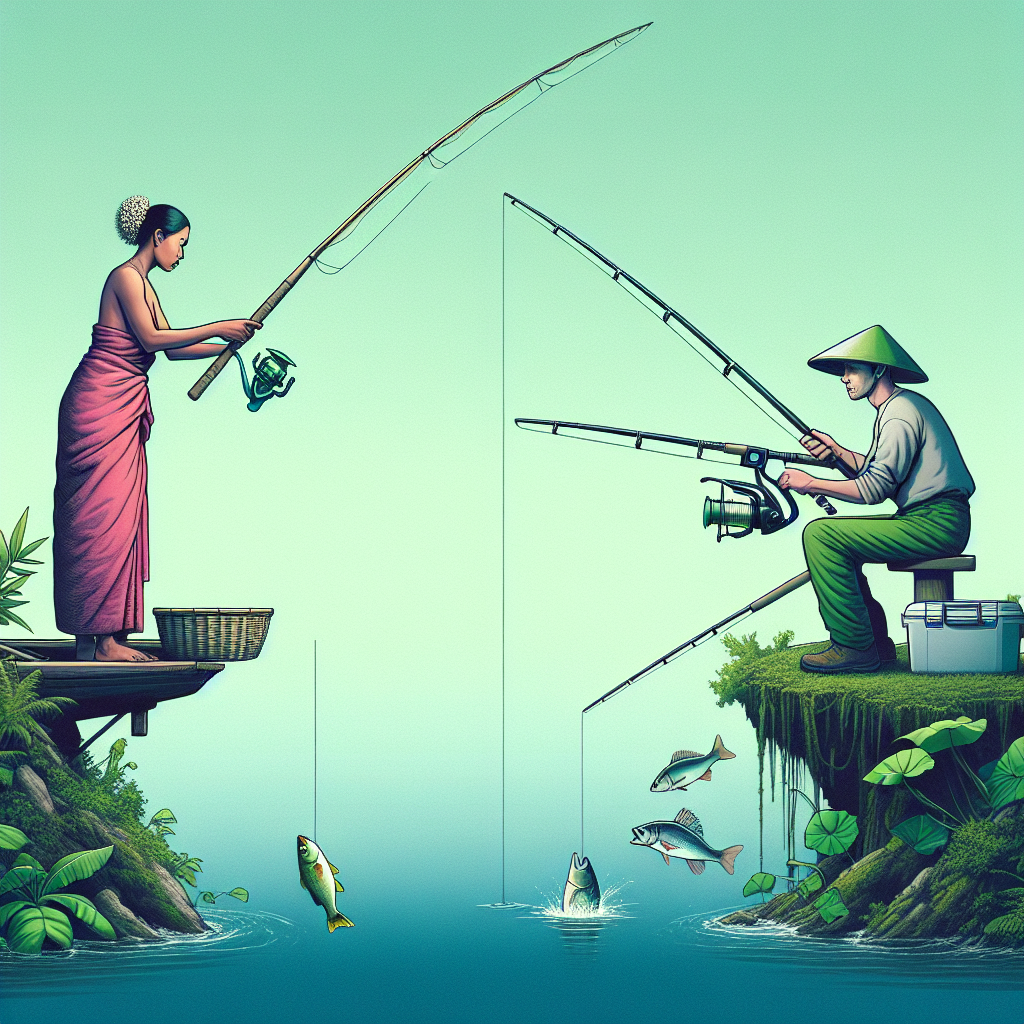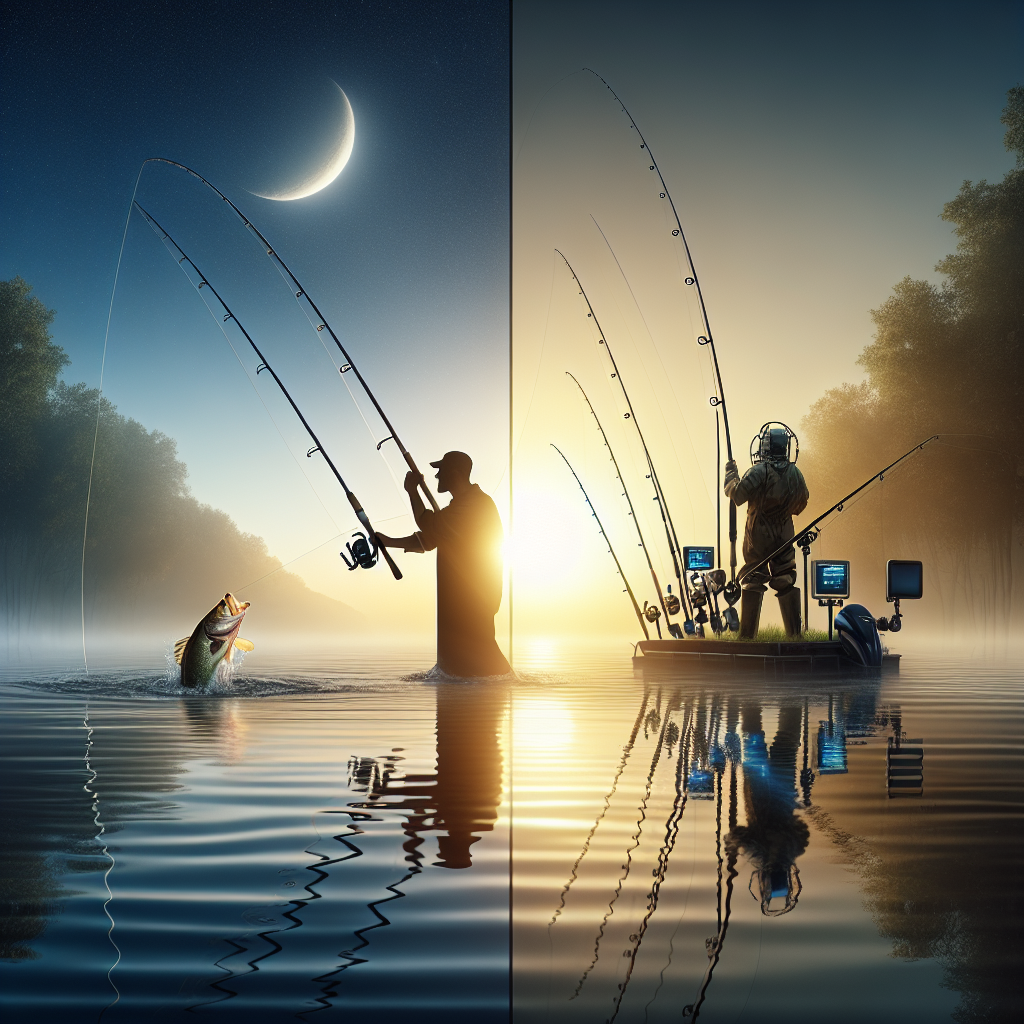Step into the world of modern fishing where tradition and technology harmoniously merge. In ‘Embracing Change: Adapting To New Fishing Techniques And Technologies,’ you’ll journey through the fascinating evolution of fishing, from rudimentary rods to sophisticated sonar systems. Embrace change by understanding the novel trends revolutionizing this age-old practice. Whether you’re an old hand at the reel or a novice just testing the waters, this extensive exploration enables you to adapt your skills and gear to today’s advanced fishing scene.
The Evolution of Fishing Techniques and Technologies
Fishing has been a crucial part of human survival and culture since the dawn of time. From the first humans who used their hands to catch fish, to the present day where high-tech equipment aids in global fisheries, the ways we fish have evolved drastically.
The Road from Ancient Fishing Methods
The early man used simple, yet effective methods such as spearfishing and netting. These methods were primitive but they formed the basis for the more advanced techniques that you see today. Over time, inventive minds have crafted countless new tools, adding hooks, fishing lines, poles, and boats to the fisherman’s arsenal.
The Technological Revolution in Fishing
There has been a mini technological revolution in fishing more recently, one that changed the face of this ancient practice. Modern technologies and methods have allowed us to increase our catch significantly, reduce the labor involved, and even have evolved our understanding of marine life. Today, fishing is not about just casting a net or a line; it’s about using satellite technologies, aquatic drones, and sophisticated fish finders to maximize yield.
Importance of Adapting to New Fishing Technologies
Adopting new fishing technologies isn’t just about being able to catch more fish. It’s also about utilizing our resources more efficiently, safeguarding our environment, and ensuring the safety of those who venture out to catch fish.
Efficiency and Productivity
New technologies enable us to find and catch fish more efficiently which greatly improves productivity. These advancements help us extract the maximum out of every fishing trip, thereby improving the profitability of fishing endeavors.
Environmental Sustainability
Environment-friendly fishing gears and practices minimize the damage to the marine ecosystem. By adopting these new methods, we contribute towards the sustainability of our environment while ensuring the continued abundance of marine life for generations to come.
Safety and Risk Management
The introduction of GPS, weather forecasting technologies, and automated systems have reduced the risks associated with fishing. It is easier to avoid dangerous areas, predict bad weather, and call for help in case of emergency.

Examples of New Fishing Technologies
In embracing new technologies, we have seen major breakthroughs in the design of fishing gears, navigational systems, and even remotely operated devices.
Sustainable Fishing Gear
One example of sustainable fishing gear is the Turtle Excluder Device. The device allows captured sea turtles to escape while retaining the rest of the catch. This ensures that fishing practices have minimal impact on the population of sea turtles, making them more sustainable.
GPS and Fish Finding Technology
Fish finding technologies and GPS systems have revolutionized the way we locate and catch fish. With these tools, fishermen can identify fish hotspots and navigate there precisely, thereby saving time and reducing fuel consumption.
Drones in Fishing
Drones are the newest entries in the fishing world. Drones fitted with cameras can scout large areas for schools of fish. They are particularly useful in sport fishing where locating the fish is half the battle.
The Use of Artificial Intelligence in Modern Fishing
Artificial Intelligence is starting to make inroads into fishing. It enables predictive analysis of fish patterns, automates fish detection, and improves overall yield and profitability.
Predicting Fish Patterns
AI algorithms analyze past and current data to predict patterns in fish movements, feeding habits, and ideal fishing conditions. This information is indispensable in planning effective fishing trips.
Automating Fish Detection
AI can automate fish detection both in terms of fish finding equipment and image analysis. These functionalities save a substantial amount of time and effort in fishing.
Improving Yield and Profitability
Through optimal planning and efficient fish locating capabilities, AI has the potential to improve both yield and profitability. Improved catch rates mean larger income for the same investment of effort and resources.

Role of Mobile Applications in Fishing
The rise of smartphones has seen an influx of mobile apps designed to aid fishing. These apps offer services ranging from forecasting fishing conditions to providing online marketplaces for selling the day’s catch.
Fishing Forecasting Apps
Fishing forecasting apps analyze various essential factors like tide times, solunar periods, and weather to predict fish activity and suggest the best times to fish.
Real-time Weather and Sea Conditions Updates
Mobile apps also provide real-time updates on sea conditions and weather, helping fishermen plan their trips and avoid dangerous situations.
Online Marketplaces for Selling Catch
There’s a growing trend of mobile apps that offer an online marketplace where fishermen can sell their fresh catch directly to consumers or businesses, thus avoiding middlemen.
The Impact of Climate Change on Fishing Practices
Climate change has a significant impact on fishing. It propels shifts in fish migratory patterns, necessitates new sustainable fishing practices, and demands adaptation from fishermen.
Changes in Fish Migration Patterns
The warming oceans due to climate change have caused fish populations to move toward cooler waters. It directly impacts the traditional fishing areas and seasons, challenging us to adjust our fishing practices.
New Practices for Sustainable Fishing
Climate change necessitates a move toward more sustainable fishing methods. It’s crucial to balance catch rates with the resilience of fish populations to ensure that our fishing practices do not contribute to the climate crisis.
Adaptation Measures for Fishermen
Fishermen are compelled to adapt to these changing circumstances. Such adaptations include skill development, equipment upgrade, and adoption of new fishing methods.
Training and Education for New Fishing Techniques
Adoption of new fishing techniques and technologies requires effective training and education. It’s not enough to simply provide new tools; fishermen must be trained to use them optimally.
Formal Fisheries Education
Many institutions around the world offer fisheries education programs, teaching students about sustainable fishing practices, new technologies, marine conservation, and business aspects of fisheries.
Informal Training and Workshops
In locations where formal education isn’t an option, informal training and workshops play a key role in impating skills and knowledge about new fishing methods and technologies.
Online Platforms for Learning
Online learning platforms offer courses and webinars about fishing. These widely accessible resources are becoming increasingly popular in the digital age.
Challenges in Adopting New Fishing Technologies
While the adoption of new fishing technologies has numerous benefits, there are also some hurdles along the way.
Cost of New Technologies
Significant initial investment may be required for new technologies. For many small-scale fishermen, this could pose a major challenge.
Resistance to Change
Like any other industry, there can be resistance to change in fishing as well. Adapting to new techniques and technologies requires a shift in mindset which may prove challenging for some.
Regulatory Limitations
Some fishing technologies may not be permitted under current regulations. These regulations need to be revisited and updated in light of the benefits that new technologies offer.
Strategies for Effective Adoption of New Fishing Technologies
While challenges exist, so do strategies to overcome them and ensure effective adoption of new fishing technologies.
Participative Approach in Introduction of Technology
Involving fishermen in the process of introducing new technologies increases acceptance. The participative approach facilitates a better understanding, ensuring that the benefits are known and appreciated.
Gradual and Phased Adoption
Rather than a complete upheaval of existing methods, a gradual and phased adoption of new technologies may prove more effective.
Government Support and Subsidies
Governments can play a crucial role in facilitating adoption of new fishing technologies by offering subsidies, grants, or low-interest loans.
The Future of Fishing: Emerging Technologies and Practices
Fishing, like many other sectors, is set to witness a whirlwind of technological revolutions including aquaculture technologies, biotechnologies and big data.
Potential of Aquaculture Technologies
Aquaculture has the potential to sustainably meet the increasing demand for seafood. Leveraging technologies such as automated feeding systems, water quality monitors, and digital analytics can significantly improve aquaculture efficiency.
Biotechnology in Fishing
Biotechnology has exciting applications in fishing, including genetic engineering and breeding for disease resistance, faster growth, and enhanced nutrition.
Role of Data and Analytics in Fishing
The future of fishing will see big data playing a major role. From forecasting fish patterns to optimal use of resources, all will be driven by data analytics.
In conclusion, the intersection of technology and fishing shows great promise, carrying the potential to revolutionize the way we fish and how we manage our marine resources. It’s all about embracing change and adapting to the new fishing techniques and technologies. The future of fishing lies in our ability to adapt, use technology for our benefit, and still respect the bounty of nature.










